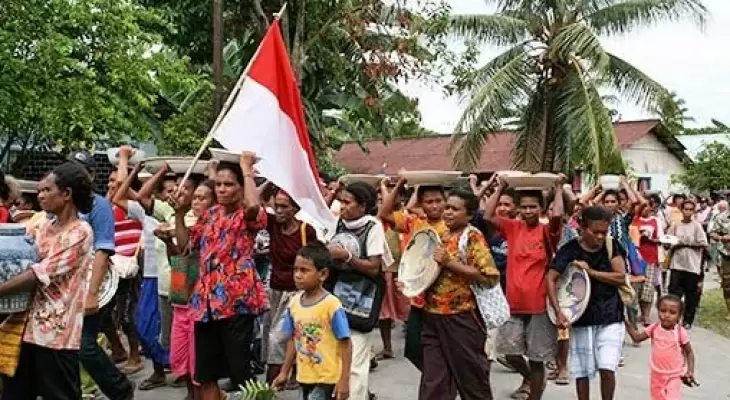Traditions in the Marriage of the Byak Tribe

Holiday Ayo - Ararem is a tradition of delivering a dowry from the family of the man or prospective husband to the family of a woman as a prospective wife that has been going on for generations in the culture of the Byak tribe in Papua.
The Wor procession includes, first, Wor Kedwa or knocking on the door of a woman’s family house.
Second, Wor Wafufen, namely it happens between dowry and accepting the male’s family into the house. Third, Wor Abuskapar and fourth Wor Erisam closed all processes.
Wor Erisam is a ceremony to bind the two couples by setting a Sarak bracelet (a bracelet made of white iron) and a Samfar (a bracelet made of bia leather) on the arms of the two couples who are about to get married. “Uncle from a female family setting the both arms of a partner,” said Ronsumbre.
An anthropologist Enos Rumansara said that the Wor tradition is a tradition in Biak culture related to the religious life of the Biak tribe. All aspects of the social life of the Biak people are often marked by traditional ceremonies. This can be seen in the philosophy of the Biak people saying “Nggo Wor Baindo Na Nggo Mar”.
This means that, without a ceremony or traditional party we will die. Therefore, as stated by Rumansara, Wor has two definitions. First, as a traditional ceremony. Second, as a traditional song. Wor contains the meaning of cultural values that function to regulate their relationship with the Creator, among others, and the natural environment in which they are located.
The Ararem ceremony is also carried out with the presence of Wor Farbakbuk, which is Wor related to the marriage ceremony. There are several stages in the process such as Wor Ramrem, Woryakyer and Wafwofer, and Wor Anenfasus.
Ararem or dowry provided from the male side to the female family is usually in the form of antique Chinese plates (Ben more more, ben bepon), jars, and money. In the procession of delivering the dowry, there is also money of milk as an emotional engagement between a mother and her daughter while in the womb.
Chinese ceramics for residents on the coast of Cenderawasih Bay, especially the Saireri customary area, are valuable items or objects that have cultural values. Chinese ceramics are considered high in value and in status, because these objects are not produced in Papua and are much higher quality and more attractive than pottery (clay containers).
Chinese ceramics are made from high-quality glass alloys, beautifully decorated and fired at much higher temperatures than those used in kilns in Southeast Asia. China’s high-quality glass-mixed ceramics are the main merchandise for longer distances.








Leave a comment